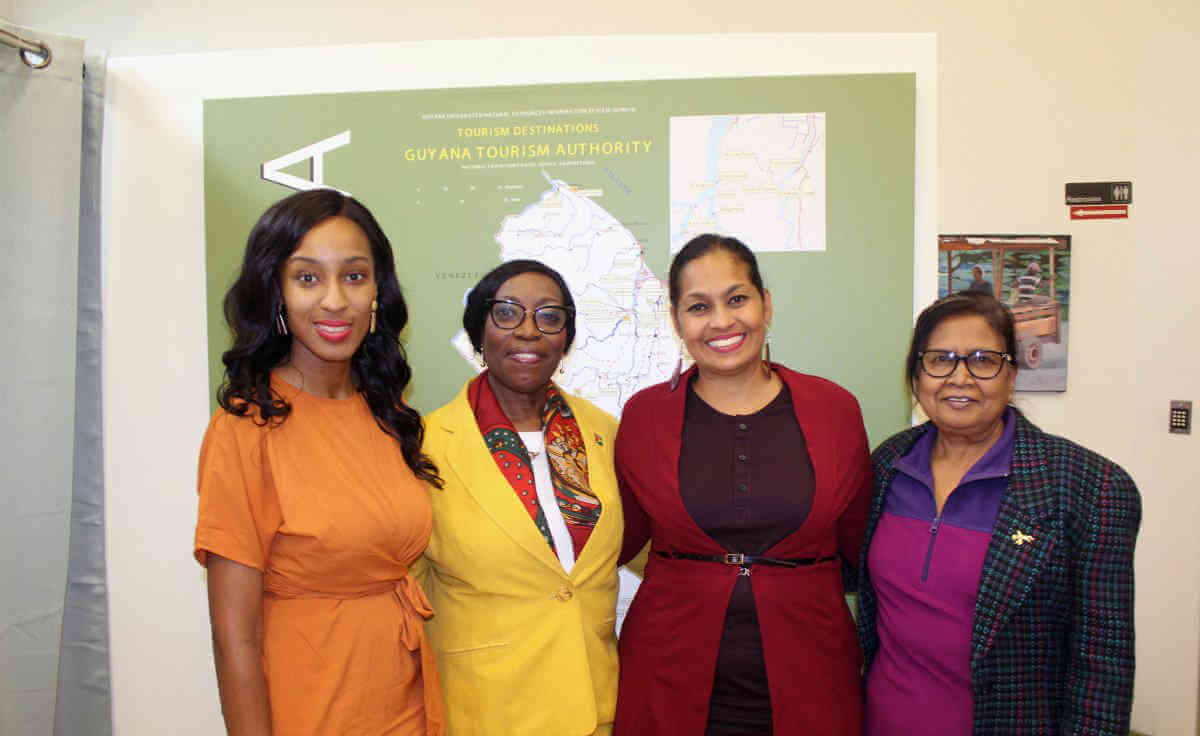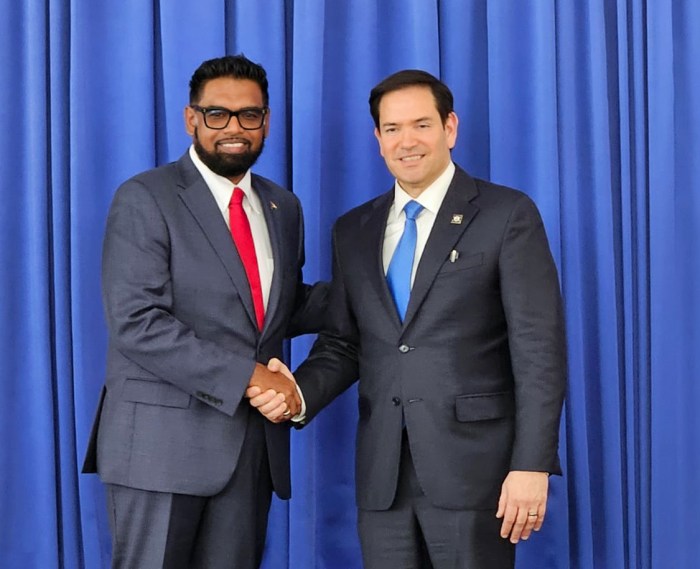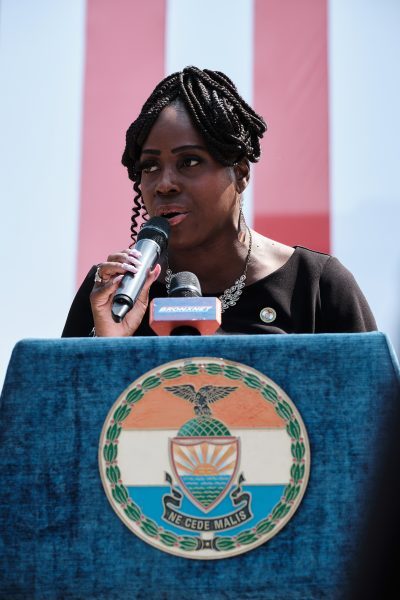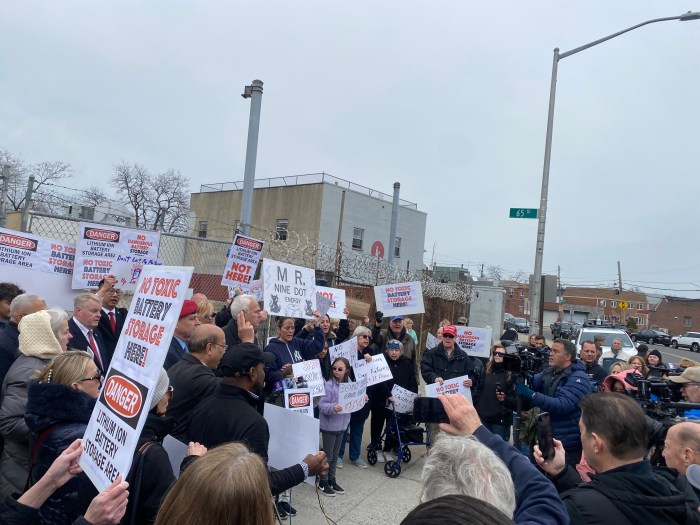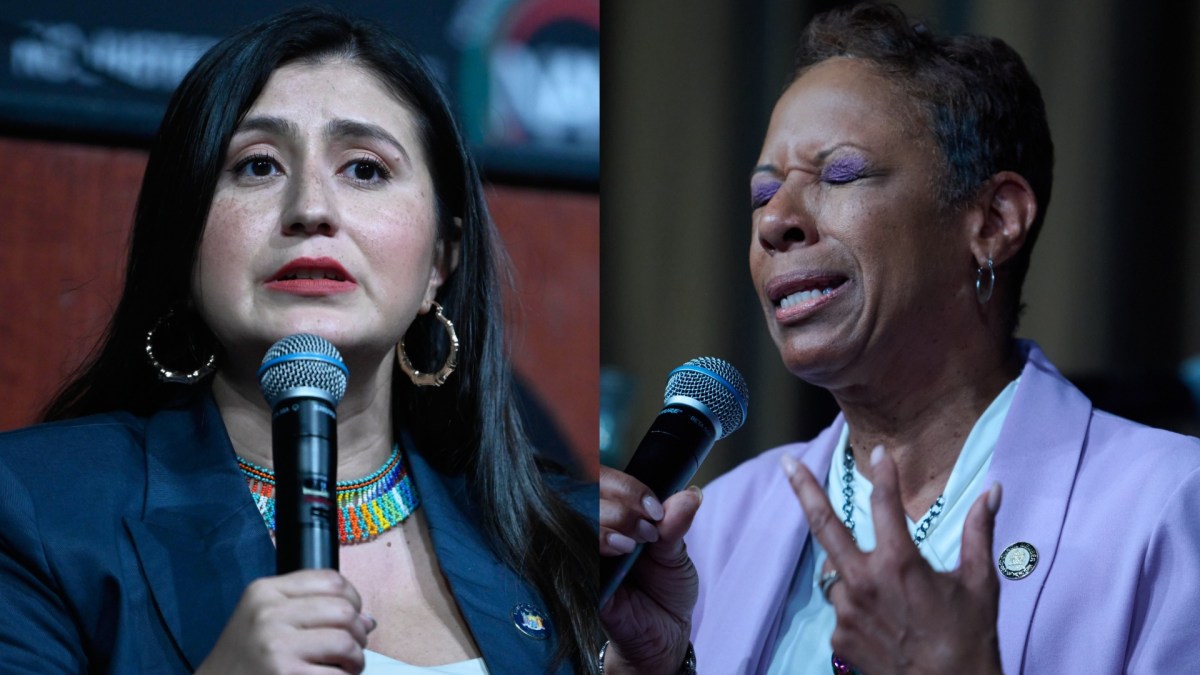Commemorating, its 30thAnniversary, since offering a gift of a million acres of rainforest, put forward to the Commonwealth by the Government of Guyana, and commonwealth partnership, commissioned by late President of Guyana, Desmond Hoyte in 1989, the Iwokrama International Centre for Rain Forest Conservation and Development in Guyana, continues to be at the forefront of conservation.
This is according to, Georgetown-born, Dr. Raquel Thomas-Caesar, scientist, tropical forest ecologist, and director, who gave a dynamic, informative talk at the Guyana Consulate on Thursday, Dec. 5, thanks to Consul General of Guyana, Barbara Atherly, and staff who welcomed a wide-cross-section of the Guyanese community.
Dr. Thomas-Caesar, who is responsible for the Iwokrama’s monitoring system, research and science and training, along with contributions to community relations and business development, inclusive of forestry and tourism, said when you think about a small country like Guyana, it precedes the 1992, big Rio, Brazil, Environment conference, “so Guyana was always in the forefront of conservation, and it is significant that we are still here surviving, despite all the challenges.”
Giving credit to all successive governments, whom she said, had supported Iwokrama, late President Cheddi Jagan signed the Memorandum of Understanding in 1995 with the Commonwealth to pass the Iwokrama Act, which officially established ithe Centre in 1996.
Also chair of Board of the Protected Areas Commission (PAC), which oversees the Protected Areas Systems, Dr. Thomas-Caesar works diligently with a team to maintain that system, which includes Kaiteur National Park, where the world’s largest single drop waterfall is located.
She said that Shell Beach, the Kanuku Mountains, the Kanashen Amerindian Community Protected Area owned by the Wai-Wai community of Masakanari, all fall under the system and are guided by the Protected Areas Act of 2011.
Iwokrama, while part of the Protected Areas system, is governed independently by a board of trustees, due to its international status.
The PAC also manages the Urban Parks of Region 3 & 4, which are the Joe Viera Park, Botanical Gardens, Guyana Zoo and the National Park.
“I want to encourage Guyanese, when they vacation at home, do not stay only on the coast, come into the interior of the country. Even Guyanese at home don’t venture out into the beauty of the country’s hinterland areas,” said Dr. Thomas-Caesar. She assured Guyanese that by using public transportation, an eight-hour ride, lower accommodation at Iwokrama, if on a budget, instead of a cabin, they have an amazing opportunity to enjoy the beauty of the homeland.
She said the highlight of visiting Iwokrama is the Canopy Walkway where tourist experience breathtaking views, seeing birds such as the Aracari, Scarlet Macaw, Guiana Toucanette and Channel-Bill Toucan, and Red Howler Monkeys. Additionally, a hike to the summit of Turtle Mountain of about 1000 feet (300 meters) is a popular tour as it gives a spectacular view overlooking the forest canopy
Iwokrama is considered one of the best places on earth to spot the elusive jaguar in the wild, and a high percentage of visitors have seen these magnificent cats at either dawn or dusk.
She said it is very exciting traveling in Region 8 and to the Rupununi in Region 9 where the Guiana Shield meets the Amazon.
Places including Rockview, Surama Village, Karanambo, Rewa Village, Dadanawa Ranch, Waikin Ranch, Wichabi Ranch, Toka Village, Paramakatoi, Moruca, Pomoroon, Arrow Point, environmentally sound regions comprise Guyana’s extreme beauty.
“It is ours, we are connected to it. The Kaietur Falls is phenomenal to experience, you would not see anything like it anywhere else. I visited Roraima Mountain and it felt like being in space. It is unique up there, it is fascinating,” said the scientist who describes her job as multifaceted.
The Iwokrama Forest is nearly 3,710 sq. Kilometers (1,430 sq. miles) of Central Guyana in the heart of the Guiana Shield, one of the four large intact tropical forest ecosystems in the world. Iwokrama also represents an important transition zone in rainfall, landforms, human histories and biological communities.




